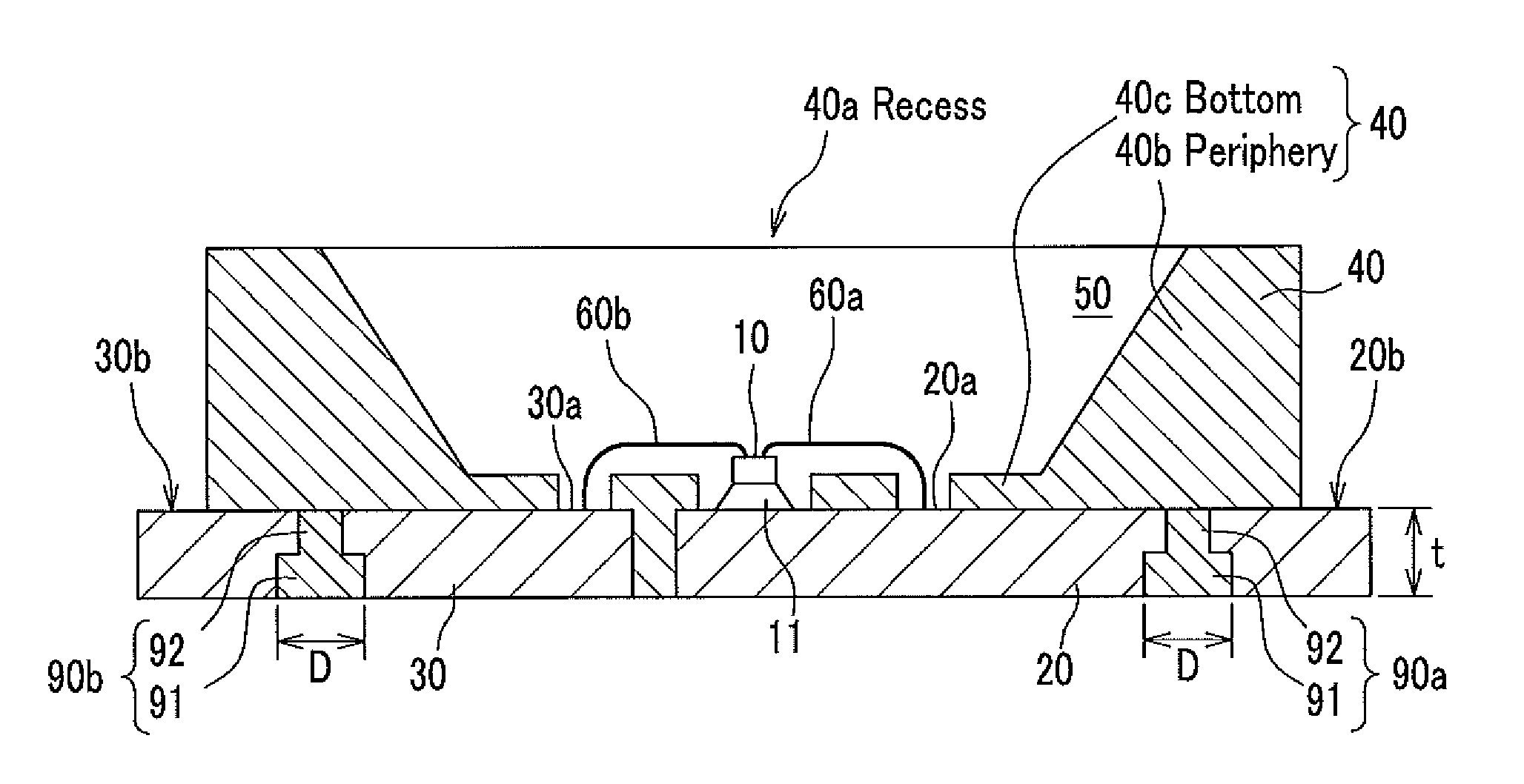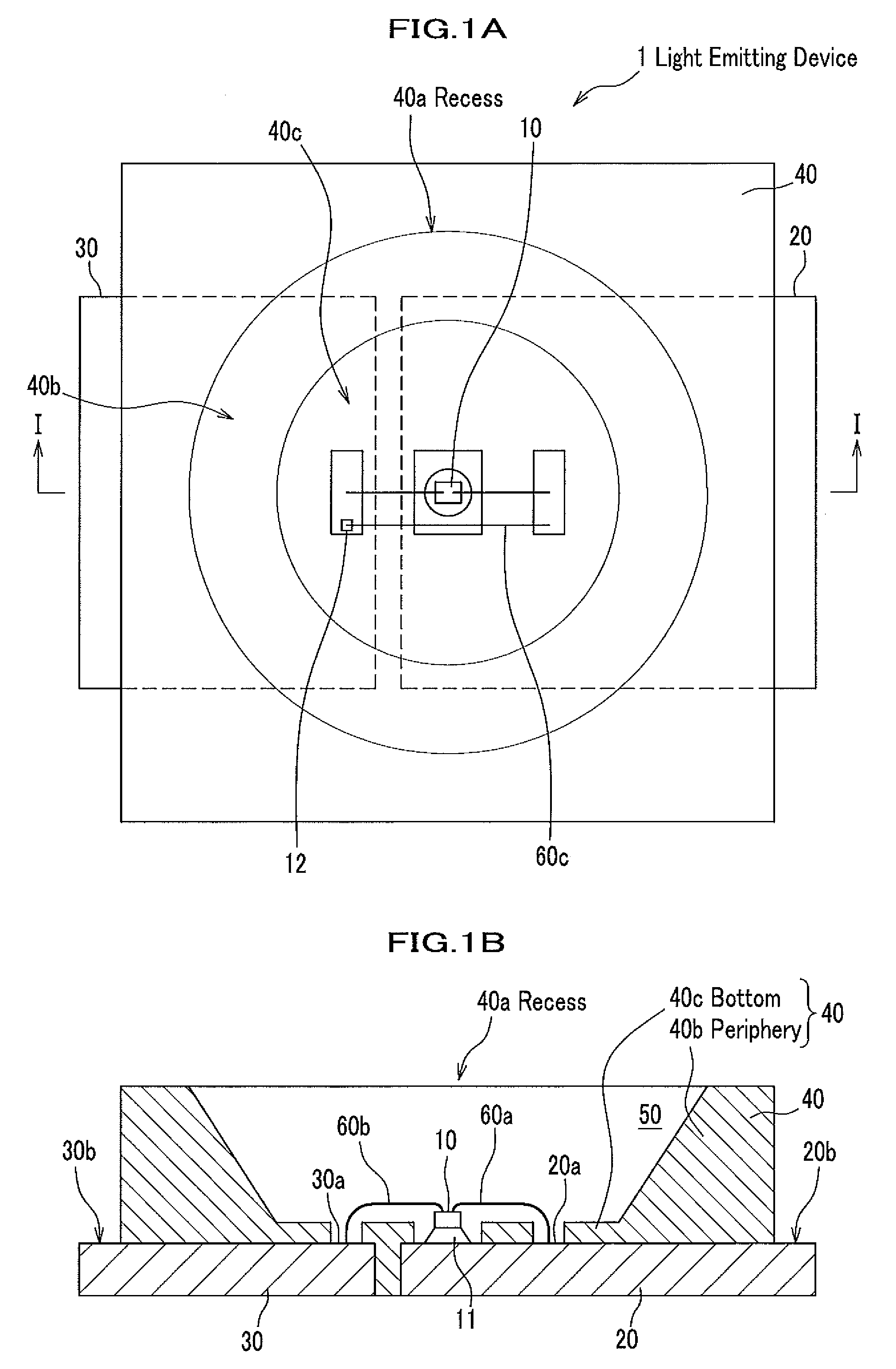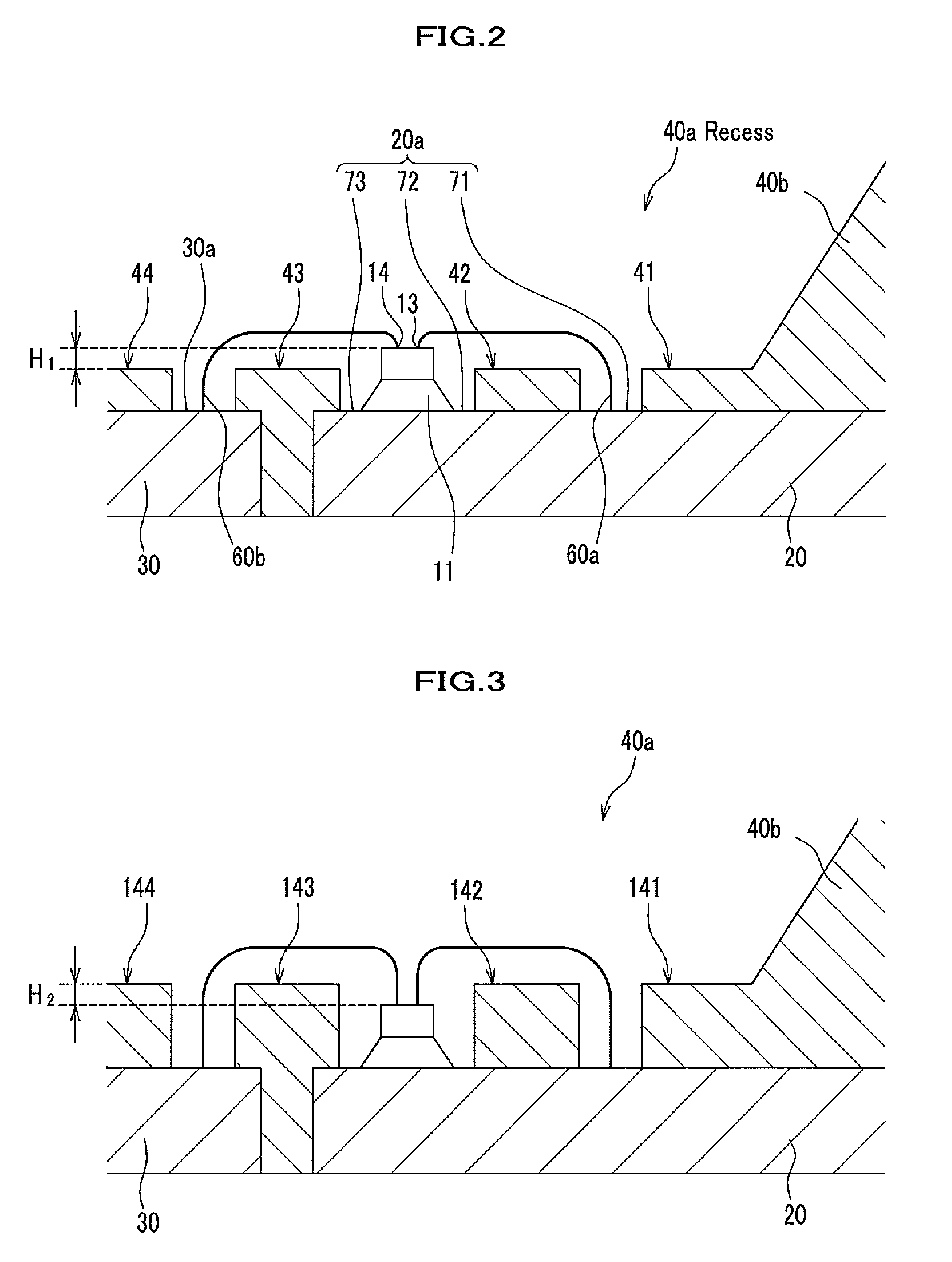Light emitting device
a light-emitting device and thermoplastic resin technology, which is applied in the manufacture of semiconductor/solid-state devices, semiconductor devices, electrical devices, etc., can solve the problems of inability to obtain the necessary strength of the molding needed for releasing, inability to form a thin-shaped molding for the thermoplastic resin-based composite material, and inability to achieve the necessary strength of the molding. to achieve the effect of stable light-emitting property, efficient production of light-emitting devices, and stable light-emitting
- Summary
- Abstract
- Description
- Claims
- Application Information
AI Technical Summary
Benefits of technology
Problems solved by technology
Method used
Image
Examples
first embodiment
[0042][Construction of Light Emitting Device]
[0043]FIGS. 1A and 1B are schematic diagrams showing a construction of the light emitting device of the first embodiment of the present invention. FIG. 1A is a plan view of the light emitting diagram observed from a main light emitting surface side. FIG. 1B is a I-I line cross-sectional diagram of FIG. 1A. FIG. 2 is a magnified cross sectional diagram of a portion of FIG. 1B, in the light emitting device.
[0044]A light emitting device 1 of the first embodiment comprises, a light emitting element 10, a first lead frame 20, a second lead frame 30, a first resin forming body 40, and a second resin forming body 50. In the light emitting device of the present invention, a surface side on which the light emitting element 10 is mounted is called a main surface side, and the opposite side is named rear surface side. The first and the second lead frames 20 and 30 are electrically connected to the light emitting element 10. The first resin forming b...
second embodiment
[0087]FIG. 6 is a cross-sectional diagram schematically showing a construction of the light emitting device of the third embodiment of the present invention. The light emitting device of the third embodiment has the same construction as the first embodiment except for a difference in a shape of the bottom 40c of the first resin forming body 40. Thus, the same numbers are used in FIG. 6 as in FIG. 2 and additional explanations will be omitted. As shown in FIG. 6, a bottom 40c (coverings 41, 43, and 44) of a first resin forming body 40 of the third embodiment, covers surfaces of first and second lead frames 20 and 30 except for mounting regions 73 and 74 of the light emitting element 10, and a mounting region of a wire 60a and a mounting region of a wire 60b (second inner lead 30a), and an extended part 41a is formed with the covering 41. That is, at the bottom 40c (coverings 41, 43, and 44) of the first resin forming body 40 shown in FIG. 6, a mounting region 71 for the wire 60a that...
forth embodiment
[0089]FIGS. 7A and 7B are schematic diagrams showing a construction of the light emitting device of the fourth embodiment of the present invention. FIG. 7A is a plan view of the light emitting device observed from a main light emitting surface side. FIG. 7B is a VII-VII line cross-sectional diagram of FIG. 7A. The light emitting device 1C of the forth embodiment further includes a base 80 in addition to first and second lead frames 20 and 30. The light emitting device 1C of the fourth embodiment including the base 80, has the same construction as the light emitting device 1 of the first embodiment except for a difference in shapes of the first lead and the second lead frames 20 and 30. Therefore, the same numbers are used in FIGS. 7A and 7B as in FIGS. 1A and 1B, and similar explanations will be omitted. The base 80 is provided between the first lead frame 20 and the second lead frame 30. The light emitting element 10 is mounted on the base 80. A shape of the base 80 is rectangular ...
PUM
 Login to View More
Login to View More Abstract
Description
Claims
Application Information
 Login to View More
Login to View More - R&D
- Intellectual Property
- Life Sciences
- Materials
- Tech Scout
- Unparalleled Data Quality
- Higher Quality Content
- 60% Fewer Hallucinations
Browse by: Latest US Patents, China's latest patents, Technical Efficacy Thesaurus, Application Domain, Technology Topic, Popular Technical Reports.
© 2025 PatSnap. All rights reserved.Legal|Privacy policy|Modern Slavery Act Transparency Statement|Sitemap|About US| Contact US: help@patsnap.com



